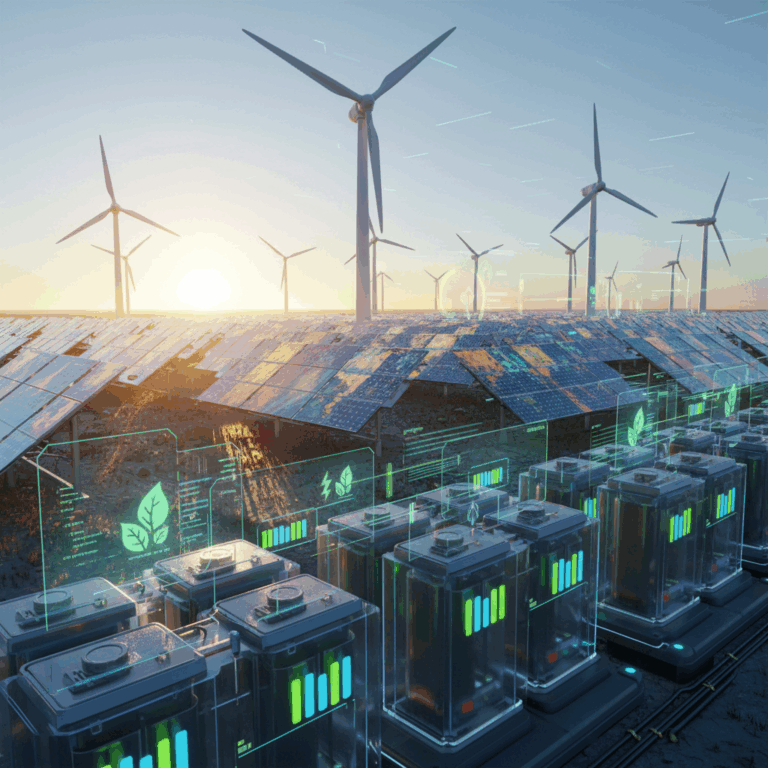Innovations in Solar Energy
Solar energy technology has undergone remarkable advances, significantly improving efficiency and versatility in 2025. These breakthroughs enhance the role of solar power in a cleaner energy future.
Innovations like perovskite solar cells and bifacial panels are transforming how solar energy is captured, increasing output while exploring new applications in architecture and infrastructure.
Such developments enable solar power to be both more cost-effective and adaptable, paving the way for widespread deployment in various environments and grid systems.
Perovskite Solar Cells and Tandem Designs
Perovskite solar cells represent a major breakthrough due to their lightweight, flexible properties and superior light absorption compared to silicon cells. They offer higher efficiency at potentially lower costs.
When combined in tandem designs with traditional silicon panels, these cells can surpass 30% efficiency, a threshold unachievable by silicon alone. This synergy advances the overall performance of solar modules.
These advancements could accelerate adoption by boosting energy yields and enabling new product forms, such as flexible panels, that suit diverse installation needs both residentially and commercially.
Efficiency Milestone
Tandem perovskite-silicon cells have recently crossed the 30% efficiency milestone, bringing solar closer to its theoretical limits and drastically improving return on investment for solar projects.
Bifacial and Transparent Solar Panels
Bifacial solar panels innovate by capturing sunlight on both the front and back surfaces, increasing energy production by up to 30%. This design maximizes power output from a given installation footprint.
Transparent solar panels integrate into building windows and facades, allowing structures to generate power without compromising natural light or aesthetics. This expands solar’s role beyond rooftops.
Together, these technologies expand where and how solar power can be utilized, making clean energy generation more integrated within urban environments and optimizing limited space.
Advancements in Wind Power
Wind power technology has made significant strides, becoming more cost-effective and efficient. These advancements are crucial to increasing wind’s share in the global renewable energy mix.
Improved turbine designs and materials contribute to lower costs and higher reliability. These changes allow wind energy to compete strongly with traditional power sources.
The expansion of both large-scale and smaller wind installations supports a broad adoption, from commercial projects to residential applications, enhancing sustainable energy access.
Cost Reduction Trends
Investment costs for wind power have fallen by approximately 50% in the past 15 years, dramatically improving its economic viability. This trend continues as technology matures.
Advances in turbine design and manufacturing efficiencies contribute significantly to reducing capital expenses, making wind turbines one of the cheapest sources of electricity today.
These cost reductions enable broader deployment in diverse geographic locations, facilitating the growth of wind energy capacity worldwide.
Competitive Edge Over Thermal Power
Wind power now offers electricity at lower costs than many thermal power plants, enhancing its competitiveness. This shift supports the ongoing replacement of fossil fuels.
Additionally, wind energy provides environmental benefits by eliminating greenhouse gas emissions and reducing air pollution compared to thermal generation.
Its growing cost advantage and clean profile position wind as a critical player in achieving sustainable energy transitions globally.
Commercial and Residential Wind Installations
Wind turbines are increasingly installed not only in large commercial farms but also in residential settings, where smaller units provide local energy solutions.
This diversity in installation scales allows consumers and businesses alike to harness wind power, contributing to decentralized and resilient energy systems.
Combined with advanced battery storage, these installations enhance energy reliability and self-sufficiency, boosting adoption in remote or off-grid areas.
Battery Technology Developments
Battery innovations are crucial for enhancing the storage and reliability of renewable energy systems. Advancements focus on increasing capacity, safety, and cost-effectiveness.
Improved batteries support grid stability by addressing the intermittent nature of solar and wind power, making renewable energy more dependable and efficient for users.
Continuous progress in battery technologies enables broader integration of renewables, promoting a sustainable energy future with better energy management solutions.
Solid-State Battery Improvements
Solid-state batteries offer significant upgrades over traditional lithium-ion types, featuring higher energy density and faster charging capabilities. These benefits improve overall storage performance.
Enhanced safety is another advantage, as solid electrolytes reduce risks of leakage and combustion, making these batteries more reliable for large-scale renewable storage.
Such improvements facilitate better grid integration, enabling renewable energy systems to deliver steady power while minimizing environmental impact.
Lead Batteries in Renewable Storage
Lead batteries continue to play a vital role in renewable energy storage due to their proven durability, recyclability, and cost-effectiveness compared to newer battery types.
They support diverse applications, from commercial solar farms to residential wind installations, providing scalable and sustainable energy solutions.
Their established recycling infrastructure further enhances sustainability, making lead batteries a practical choice for sustainable energy storage.
Impact on Renewable Energy Systems
The rapid advancements in renewable technologies greatly influence how energy systems operate, enhancing integration and improving overall performance. These impacts are essential for a sustainable energy future.
Improved grid integration and energy storage solutions facilitate the efficient management of intermittent energy sources like solar and wind, ensuring stable and reliable power supply.
Moreover, lowering costs across technologies drives widespread deployment, making renewable energy more economically competitive and environmentally sustainable.
Grid Integration and Storage Solutions
Effective grid integration is crucial to accommodate fluctuating renewable sources. Advanced energy storage, especially solid-state batteries, improves grid stability by storing surplus power for later use.
Battery improvements enable faster charging and higher energy density, supporting continuous supply despite variability in solar or wind generation, enhancing reliability for consumers.
Lead batteries continue to play a supportive role in storage, offering a sustainable and cost-effective option for various scales of renewable installations.
Together, these technologies help balance supply and demand, reducing the risk of outages and increasing the feasibility of 100% renewable grids.
Cost Competitiveness and Sustainability
Drastic cost reductions in renewable energy and battery storage technologies have made clean power highly competitive with fossil fuels, accelerating the shift toward sustainable energy systems.
The lower costs enable broader access and deployment, supporting economic growth while minimizing environmental impacts such as greenhouse gas emissions and pollution.
Sustainability is reinforced by using abundant and recyclable materials in renewables and batteries, reducing ecological footprint and promoting circular economy principles.






